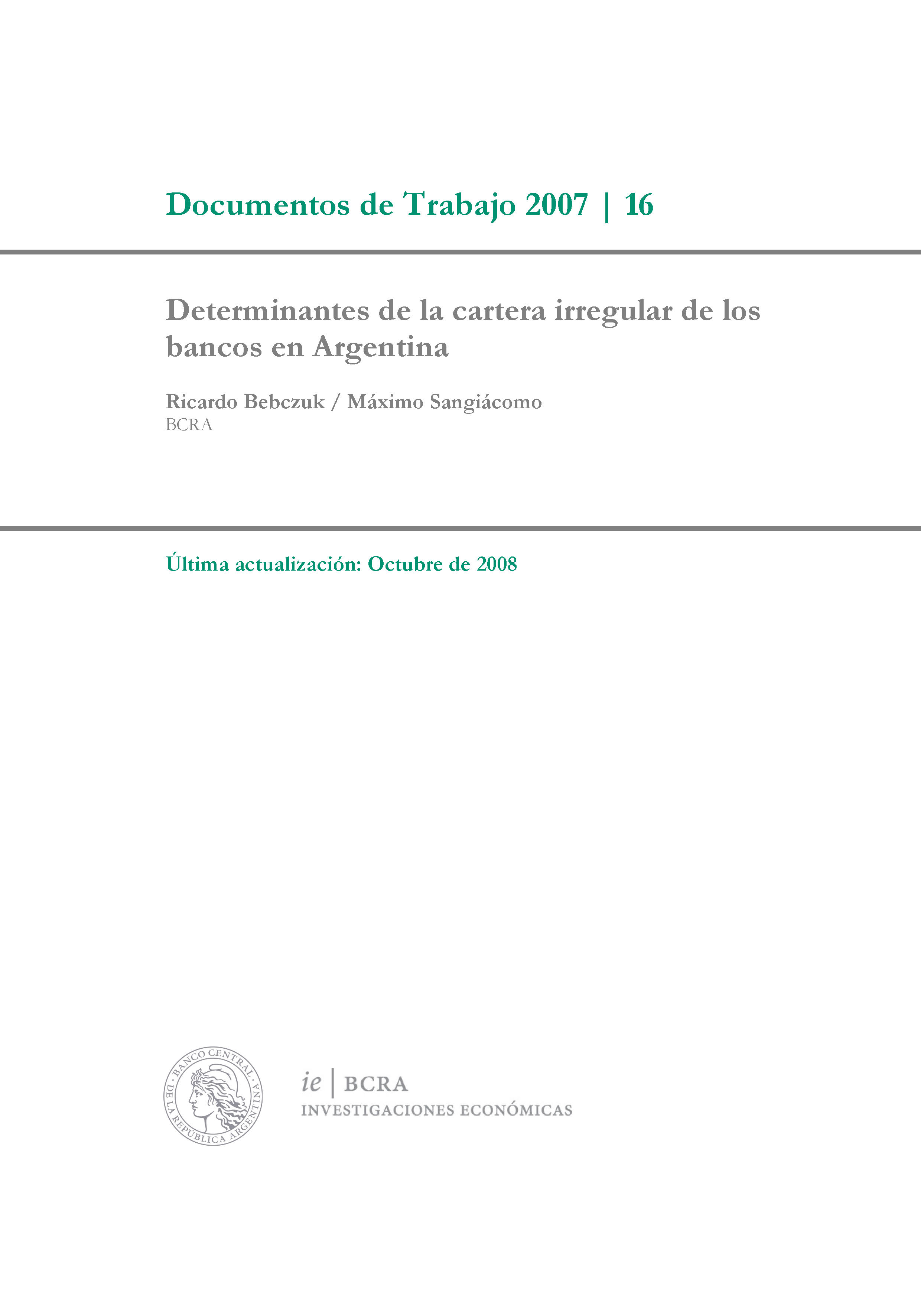Determinants of the irregular portfolio of banks in Argentina
Working papers | 2007 | N 16
Keywords:
Credits, Default, Companies, ArgentinaAbstract
The objective of this work is to analyze, for the first time, the characteristics of the portfolio of loans in an irregular situation in the Argentine banking system throughout the period 1999-2005, concentrating on credit to companies. The main findings are the following: (1) The percentage of irregular portfolio shows a high correlation with the economic cycle, although such correlation was interrupted during the peak of the crisis in 2002-2003 due to the effect of the relaxation in regulation and its effective compliance; (2) Although the percentage of irregular debt has tended to return to its pre-crisis levels, the percentage of debtors in an irregular situation continues to be very high. In 2005, approximately 1 in 3 debtors were in default. This proportion was 1 in 5 in 1999 and reached a maximum of 1 in 2 in 2003. In turn, the increase in the percentage between 1999 and 2005 is mainly explained by the increase in the extreme ranges (the smallest debts and the most big); (3) Sorting by debt amount, the percentage of irregular portfolio seems on average to follow an inverted U shape, increasing until the intermediate sections and falling thereafter; (4) The debtors who entered the system in 2000 and 2001 have a better portfolio quality than other borrowers, dismissing the alleged moral risk associated with the expectation of state bailout; (5) Public banks exhibit levels of irregularity that double, in the period 1999-2005, those of national and foreign private banks. However, it is striking that foreign banks have a higher proportion of debtors in default than public banks since 2002, and both are comfortably above national private banks; (6) The econometric results indicate that the probability of being in an irregular situation: (a) increases with the guaranteed proportion and, surprisingly, with the size of the debt; (b) increases in debtors of public banks and falls in debtors of national private banks; (c) increases with assistance via Advances and falls in Documents and—another curious result—in Personal Loans; and (7) although the change in probability is highly statistically and economically significant for all the previous variables, the macroeconomic context (measured through binary variables per year) appears as the determinant with the greatest impact on the aforementioned probability.


